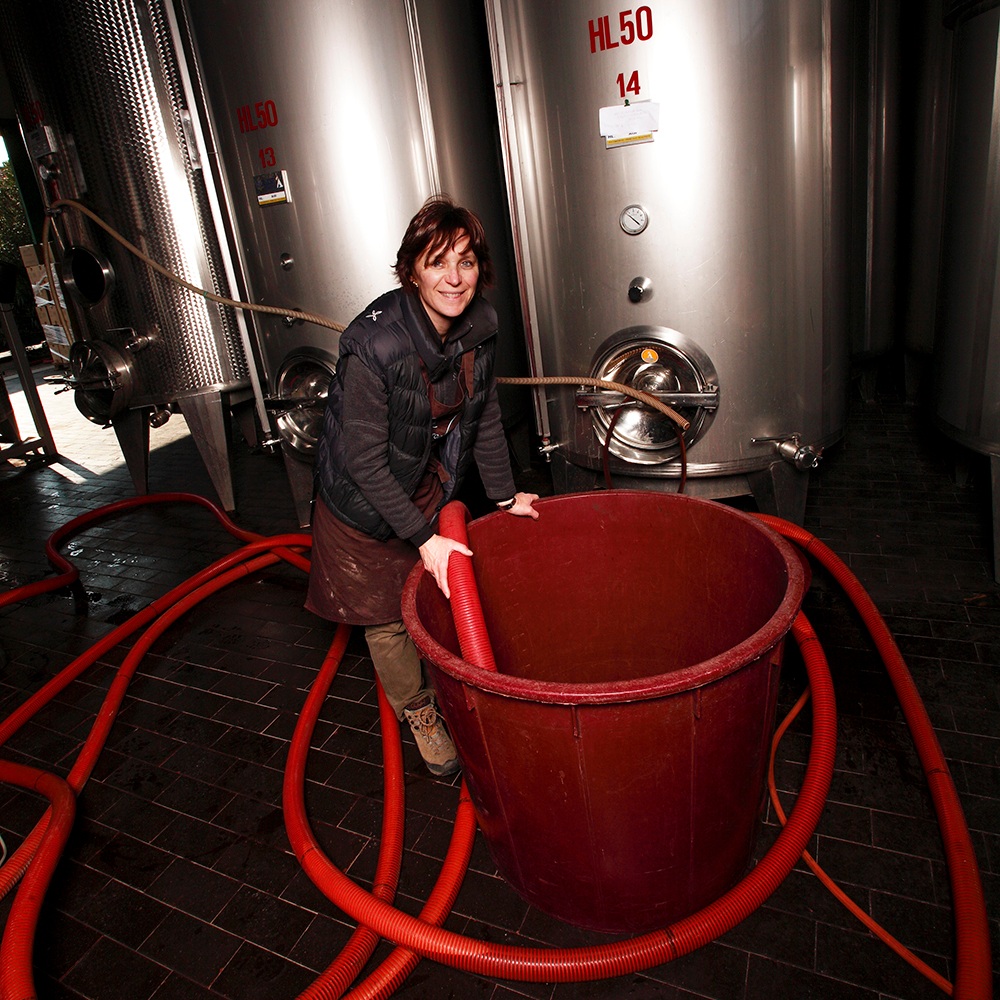| « Previous | News | Next » |
September 10, 2019
Digging Beaujolais? Check out Bardolino.

Digging Beaujolais? Check out Italy’s Bardolino.
Sitting at the base of the alpine foothills on Lake Garda’s eastern shores, the Bardolino D.O.C. ranks pretty high on the list of vineyards with a good view. The region got official D.O.C. status in 1968, the same year as it’s slightly more famous neighbor, Valpolicella. Just over 6,000 acres of vines make up this small D.O.C., where plantings consist mainly of Corvina, Rondinella and Molinara. Typically unoaked and rent week friendly (drink ‘em young folks!), grapes are traditionally blended into a rosato, called Bardolino Chiaretto, or a chillable, light-bodied red that is delicate and refreshingly uncomplicated, characterized by its red, ripe fruit notes with a bit of spice on the finish.
Located in the very heart of Bardolino production, Le Fraghe’s Matilde Poggi has become one of the most regarded winemakers of the region. Poggi’s roots run deep in the town of Affi, which sits just east of Lake Garda and south of Monte Baldo. The property and it’s 15th-century stone farmhouse have been in the family since 1880, and in 2013, Matilde was elected President of the Federazione Italiana Vignaioli Indipendenti (Italian Federation of Independent Grape Growers).
Now three decades in since her first harvest in 1984, Matilde’s wines show everything there is to love about the Bardolino region. Fresh, fruity and easy to drink, while still delicate and refined, they are the ultimate picnic/party wines. This refreshing elegance can be attributed to Poggi’s philosophy in the field and in the cellar. The estate’s 28 hectares, which consists mainly of Corvina plantings, followed by Rondinella and Garganega, have been farmed organically since 2009. Indigenous yeast are used from the vineyards but not in a spontaneous way; Matilde makes a small batch fermentation from the vineyard and then inoculates the rest of the harvest with that yeast. Fermentations are very cold and slow to increase complexity and fresh flavors.
Read more! Wine Spectator: Bardolino? Seriously?
Le Fraghe 2017 ‘Camporengo’ Garganega, Veneto IGT
Garganega is the principal grape variety in Soave, an area about less than an hour from Le Fraghe. The grape is indigenous to the area. This fresh, attractive white wine shows aromas and flavors of apple, almond, herbs, and a hint of white peach. The palate is notable for its full body, excellent progression, and overall harmony. This is a great everyday bottle of white wine. Camporengo Garganega is delicious with first courses of seasonal vegetables and fresh seafood.
Le Fraghe 2018 ‘Rodon’ Bardolino Chiaretto (Rose) DOC
91pts by Wine Enthusiast (7/1/2019)
A blend of organically farmed Corvina (80%) and Rondinella (20%), this elegant rosato opens with enticing scents of spring field flower, aromatic herb, ripe peach and a whiff of baking spice. Smooth, bright and juicy, the savory, easy-drinking palate offers wild red berry, tangerine zest and a hint of white pepper alongside tangy acidity.
Featured in:
Forbes.com by Tom Hyland (2018)
Punchdrink.com by Jon Bonné (2018)
SFGate.com by Jon Bonné (2014)
Le Fraghe 2018 Bardolino DOC
The Bardolino has a complex bouquet, with fruity essences such as sweet-sour cherry and blueberry, and spicy nuances of cinnamon and black pepper. The distinctive hallmark of this wine is without a doubt the elegance that one experiences on the palate. Although this is a standard-label wine for near-term enjoyment, it displays a remarkably soft suite of tannins and a lovely balance between a judicious acidity and full, savory flavors, characteristic of wines of this area.
